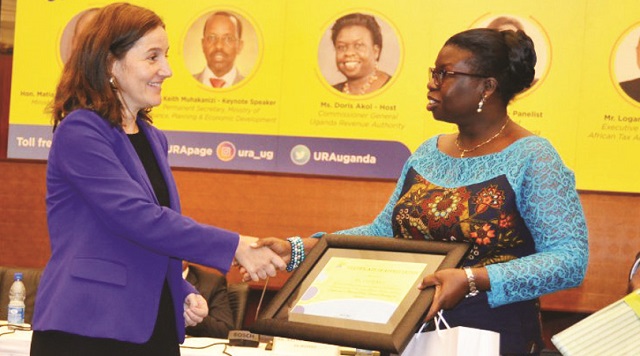
Analysts say the new initiative has to be all-inclusive to succeed
Kampala, Uganda | JULIUS BUSINGE | Uganda Revenue Authority(URA) is designing a Medium Term Revenue Mobilisation Strategy (MTRS) seeking to meet the ever growing annual revenue collection targets.
The MTRS’ core objective is to ensure that revenue collection matches the government expenditure.
Doris Akol, the commissioner general at URA told participants at the recent 10th Open Minds Forum that the strategy currently in formulation will align with the government’s ambition of funding heavy development projects such as roads, railway and energy.
“We must put significant focus on revenue mobilisation like we do for budget prudence and expenditure framework,” she said at the August 17 forum at the Kampala Serena Hotel.
She said their emphasis is to concentrate more on increasing domestic revenue mobilisation to facilitate government planning so as to mitigate the adverse impact of volatility and uncertainty in the inflow of aid which make budget planning and management difficult.
According to the MTRS’ Background Paper, the new tax strategy will work towards interfacing systems of government departments and agencies to ease tax administration purposes.
The Paper also states that Ministries, Departments and Agencies will be open to sharing information with URA upon request so that revenue mobilisation can be facilitated.
The other focus area will be the use of a Single National Identifier to ensure that all financial transactions are linked to an identification number such as the National Identification Number (NIN) or the Tax Identification Number (TIN).
Executives at the taxbody said a single national identifier will be the one to facilitate all transactions in line with the Registration of Persons Act, 2015. In addition, a Revenue Mobilization Steering Committee involving political leaders, private sector, government and others with divergent interest, power and influence will be created.
Akol said that the idea that any branch of government exists merely to spend revenue without collecting it is no longer tenable in today’s volatile operation environment.
This comes at a time when the country continues to register low levels of domestic revenue mobilisation in relation to government expenditure that has averaged at around 65% for the last five years.
It is therefore seen as a solution to Uganda’s tax problems including stunted growth of tax-to-GDP ratio (currently at 14.05%) largely attributed to presence of huge informal sector estimated to cover close to 50% of the country’s economy.
Political support key
Clara Mira, the International Monitory Fund (IMF) representative in Uganda has welcomed the new plan by describing it as a “high level road map” that needs full political support to succeed.
Mira said the new plan has to be government led – with key arms of government – Judiciary, Parliament and Executive taking centre stage. She said its implementation and benefits has to be all-inclusive with all sectors and people.
“We need to build from what is already out there like URA’s corporate strategy plan,” she said.
Gideon Badagawa, the executive director of Private Sector Foundation Uganda (PSFU), in an interview with The Independent said strengthening and actual implementation of the legal and tax framework for Uganda by those in charge is critical in telling Uganda’s future of tax administration and collection success story.
He also said Uganda’s tax policy and strategy should not ignore the fact that attracting foreign direct investment through giving necessary and time bound tax rebates is instrumental in creating jobs, expanding the economy and tax base.
URA has registered growth in revenue collections over the past years from a paltry Shs180 billion in 1991/1992 to Shs12.8 trillion in the FY 2016/2017 with revenue collection growing at around 17% per year.
Similarly, it has also expanded the tax register from very few tax payers both individual and none individual at the beginning to 996,832 taxpayers as at the end of third quarter of FY2016/17.
Net URA collections for last five financial years
| FY | 2012/2013 | 2013/2014 | 2014/2015 | 2015/16 | 2016/17 |
| Collection (Trillion Shillings) | 7.1 | 8.0 | 9.7 | 11.2 | 12.8 |
Source: URA
****
 The Independent Uganda: You get the Truth we Pay the Price
The Independent Uganda: You get the Truth we Pay the Price


